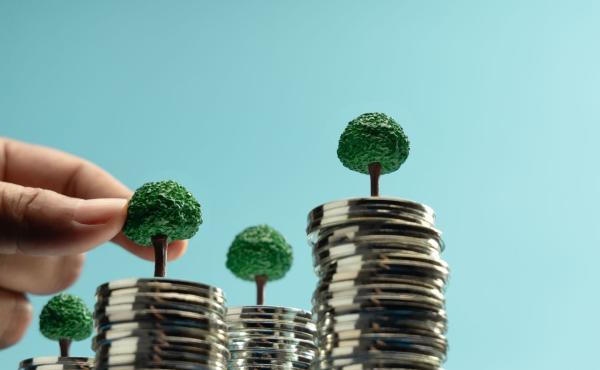
The ECGI blog is kindly supported by

Confronting carbon in the state sector: Why engaging SOEs is critical for the climate challenge
State-owned enterprises (SOEs) are significant – albeit under-examined – contributors to global climate change. At the turn of the twenty-first century, SOEs seemed to be diminishing in size and significance as advanced economy governments were selling off and redistributing state assets in a bid to shrink the size of the government, and development finance institutions encouraged emerging economies to do the same. But since the year 2000, the role of SOEs in the global economy has rebounded. Today, SOEs own around 20 percent of the total assets of the largest 2000 companies around the world, around 4 times higher than in 2000. Beyond their USD45 trillion asset base, SOEs also have become important actors in cross border acquisition activity, and large players in financial markets. SOEs now hold USD7.4 trillion in corporate debt, making them sizeable issuers in the debt capital markets.
Much of the growth in the economic significance of SOEs is driven by the meteoric expansion of China’s state-heavy economy over the past two decades. But it would be a mistake to think that the growth of SOEs is just a ‘China story’. Government owned companies remain active across large emerging markets in Asia, South and Latin America and Africa. Even in advanced market economies governments have recently sought to renationalise previously privatized firms (e.g. France’s EDF) or are setting up previously mothballed firms (e.g., the Australian state of Victoria’s State Electricity Commission). This growth of SOEs in the global economy matters for climate change because these firms are particularly active in high emitting sectors.
SOEs as key contributors to climate change
SOEs are globally significant emitters. These government-owned companies tend to dominate in high emissions sectors, including on the supply side of energy markets (such as in oil and gas exploration) and on the demand side (including electricity generation and transportation). It is perhaps no surprise that the so called ‘carbon majors’ – the firms with the highest cumulative production emissions in the world– count among their number, many SOEs, including India’s Coal India Limited, Mexico’s PEMEX, Germany’s RWE, Norway’s Equinor, and the firm with the highest global cumulative emissions, Saudi Arabia’s Aramco. Emerging estimates of SOE emissions, suggest that globally, if these firms were a country, they would have a bigger emissions footprint than every country’s, except China’s.
The deeply significant role of SOEs to global emissions will be brought into sharp relief later this year at the annual climate change conference, being hosted by the United Arab Emirates. The president of the conference this year, Sultan Al Jaber, is also the CEO of the Abu Dhabi National Oil Company, an SOE. This case illuminates the vexed role that SOEs often play in the political economy of fossil fuel dependant nations. These firms are often owned by the state because of their significance in strategic sectors. But this geopolitical and economic significance, makes them particularly challenging to decarbonise. As a consequence, policymakers, sustainable finance investors and advocates have historically put SOEs into the ‘too hard’ basket, focusing instead on reducing emissions from investor held firms. But it may be time to re-interrogate whether SOEs are indeed ‘too hard’ to decarbonize or whether some might offer promises for deep decarbonization that investor held firms do not.
SOE corporate governance and decarbonization
Recent work by the OECD has demonstrated that governments are increasingly using SOEs to try and advance their climate change goals and peer reviewed studies offer some explanation why that might be the case. For example, a recent study has shown how political support for climate change and higher levels of state ownership tend to work together to enable state-owned firms to decarbonize more quickly than investor-owned firms, at least in the electricity sector in Europe. A multi-country study of listed SOEs also show that SOEs are more responsive to environmental issues than their investor-owned peers. Nonetheless, not all SOEs are made equal. Other recent work has highlighted how electric utilities in some markets face difficulties in decarbonizing owing to prevailing policy, SOE capability and economic conditions.
So why are some SOEs more effective than others at decarbonizing? And what role do firm corporate governance structures play this? In my recent paper in the Harvard Environmental Law Review I show how corporate governance and financing structures at the firm level shape green innovation at SOEs. Specifically, I show how the interaction of the political interests of the firms’ key shareholder – the government – interact with the level of state control the government has over the firm through their corporate governance and financing arrangements. This includes mechanisms such as government authority to appoint board and management, government influence in firm investment decision making and strategy, auditing powers over firm decisions, the availability of concessional public finance and government guarantees to raise debt finance, among others.
In the article, I suggest that a government’s political interests in green innovation and state control over the firm are interrelated. It is usually in cases where governments have a strong policy reason to pursue green technologies and strong corporate control, that SOEs tend to decarbonize most quickly. Where governments have weaker control mechanisms, decarbonization progress turns on the inclinations of the board and management of the firm.
Investor engagement with SOEs
In addition to the corporate governance structure of the firm, finance is also a key lever of influence which could be used to encourage SOE climate action. Direct SOE debt issuance to domestic and international capital markets rose significantly over the past decade, in the prevailing low interest rate environment. SOE debt plays a strategic role for the governments that manage these firms, as they can often raise finance off the government’s balance sheet and thus deliver strategic goods and services to the public at lower cost. As interest rates rise and put pressure on government borrowers, debt investors are in a powerful position to engage with SOEs and their sovereign managers on climate change. As I have discussed elsewhere, however, investors need to be cognisant of the important ethical dimensions of engaging with sovereign entities, as engagement actions can have significant social costs.
Far from being intractable, governments, investors, and advocates have many options for engaging with SOEs on climate change. Where an SOEs managing government is a climate laggard, it may be most effective to exploit the firm’s exposure to capital markets. For SOEs under the stewardship of climate-leading governments, it may be more effective to encourage the government to exercise greater state-influence over the firm to accelerate decarbonization. In any event, it is now clear that as major contributors to global emissions and sometimes fast green transitioners, it is no longer a solution to simply ignore these important firms in the global climate challenge.
----------------------------------------------------------
Dr. Arjuna Dibley, Head of the Sustainable Finance Hub, Melbourne Climate Futures, University of Melbourne.
If you would like to read further articles in the 'Governance and Climate Change' series, click here
The ECGI does not, consistent with its constitutional purpose, have a view or opinion. If you wish to respond to this article, you can submit a blog article or 'letter to the editor' by clicking here.






